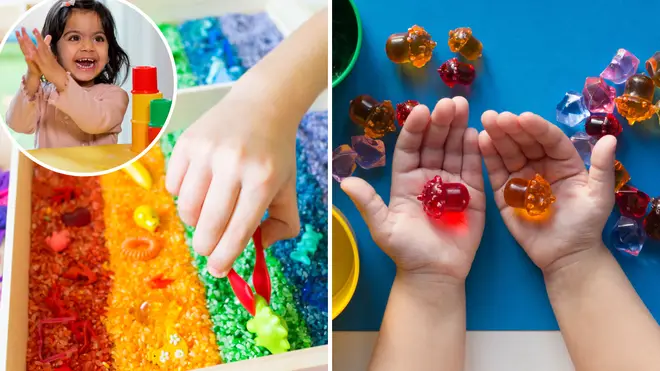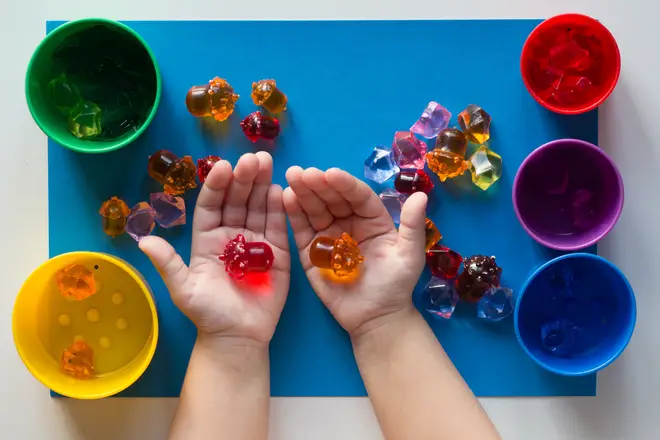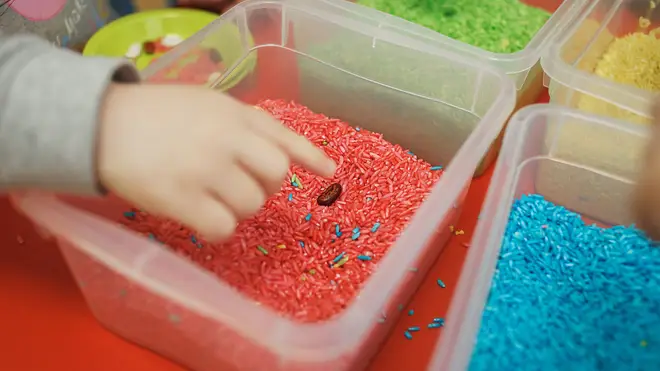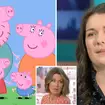Three simple ways to introduce your kids to sensory play
4 September 2023, 18:06

Here's how to get started with sensory play for your kids using jelly, bubbles and rice.
Listen to this article
 Promoted by Hartley's Jelly
Promoted by Hartley's Jelly
Sensory play is a popular activity for babies, toddlers and older children and includes any activity which stimulates their senses; taste, smell, hearing, sight and touch.
Parents and childcare experts believe sensory play can help your little ones learn about interacting with the world, how their actions affect what is around them and help with emotions, creativity and memory.
Sensory play is easy and will not cost you a lot, and challenges and games can be made using things you find around the house.
Here's our tips for the best ways to introduce your children to sensory play, what to use and how to set it up.
Jelly Sensory Play

Jelly is the perfect place to start when introducing your children to sensory play as it uses all five of the child's senses; it can be felt, tasted, smelt, heard and seen.
To add a touch of fruit fun to jelly sensory play, we suggest using Harley's Jelly to make exciting games and challenges for your children. They offer a great range of different fruity flavours and sugar free options are also available.
First, you can start by placing small toys within moulds of different coloured Hartley's Jelly and watch as your kids use their senses to work out what is hiding inside the jelly.
You can also encourage your kids to get cooking in the kitchen with you while incorporating sensory play by teaching them about the science of how jelly forms and the steps it takes to create it.
We suggest taking them step-by-step through the creation of fruit jelly by adding fresh fruit to the moulds to create a healthy snack they can enjoy later (avoid fresh pineapple, kiwi or papaya fruit as this will prevent jelly from setting).
If you want to keep it simple and for younger children, you can create a tub of jelly and allow them to taste, play and feel the textures.
Bubble Sensory Play

Using bubbles for sensory play will encourage your children to move and coordinate their bodies.
For younger children, simply watching bubbles float through the air can help their visual skills while watching the pop will introduce them to the cause and effect of actions.
We suggest filling up multiple buckets of soapy water in the garden, adding different colours to each tub. Get your children to interact with the bubbles by touching them and watching them pop, or by blowing them out and watching their journey.
Rice Sensory Play

Rice sensory play is great fun for your and your kids, and will help them develop their fine-motor skills.
To make it visually more fun for them, we suggest using food dye to create a rainbow of shades for them to play with.
Get them to touch the rice with their hands, feel it on their feet, move it around in a tub and attempt to draw shapes in it.
If you have more than one child, you can create a game where they have to pass the rice from hands to hands. This will help them learn how to keep the grains in their cupped hands and how to work together to complete a task.
























